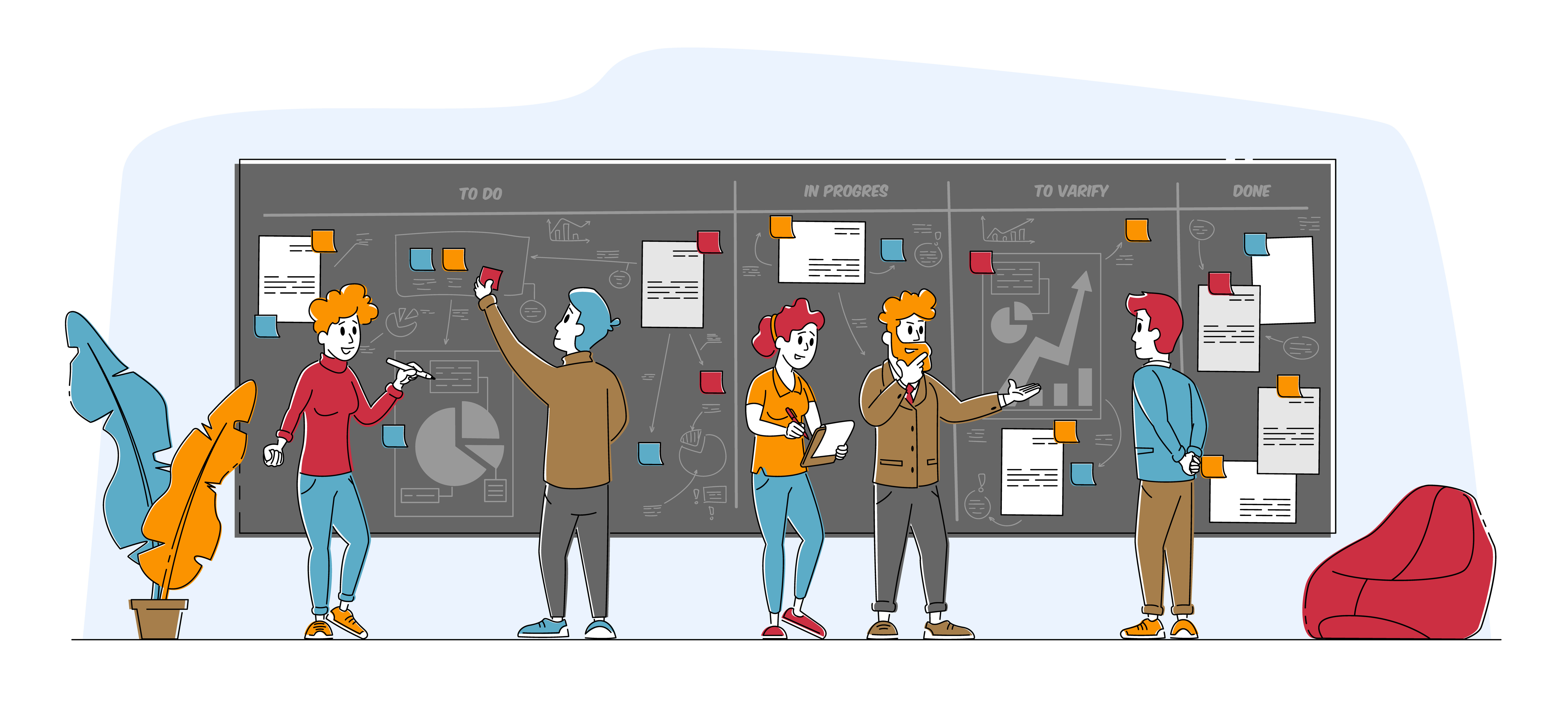Transparency in software projects fosters collaboration and accountability, crucial for success. Key strategies include flexible planning, risk management, and effective use of project management tools.
Transparency in software projects

Throughout a project, keeping an adequate level of transparent communication with all its stakeholders is key to the project’s success. This is especially true in software projects because they are intrinsically complex and often involve various stakeholders with very different backgrounds and roles. We can generally establish three scopes with different information needs: execution (development, testing, provisioning), management (staffing, planning, monitoring, and coordinating), and steering (observing adequacy to business needs, carrying out financial control, and ultimate decision-making). While sharing detailed information among these scopes is unnecessary, transparency is key both within and across them.
A transparent project environment, where the project status is constantly visible to all relevant stakeholders, and the focus is on the product as a common objective, promotes collaboration and shared accountability, and ultimately increases the chances of success.
Transparency brings many benefits to the project environment:
- promotes accountability
- improves the frequency and quality of feedback
- strengthens risk awareness
- helps with the early detection of issues
- fosters engagement of the stakeholders.
The enemies of transparency
If transparency is so clearly beneficial to the project outcome, why is it so common to face resistance against it? The number one enemy of transparency is zero error tolerance culture, which is widely acknowledged to be ineffective, and good project managers need to always contend. Other sources of resistance can be stiff hierarchical structures, geographically spread teams, information silos in the corporate, and, not to be underestimated, cultural differences among stakeholders.
Strategies to promote transparency
With the aim to establish an environment that accepts errors, one can implement strategies across project levels:
- Steering level: Establish a robust risk management framework. Continuously identify, classify, and assess project risks, factoring in error tolerance. This educates decision-makers on the inevitability of errors and leads to informed decisions.
- Management level: Account for volatility in planning and regularly review project plans and estimates. Recognize that rigidly adhering to initial plans often increases the risk of failure. Uncertainty decreases as the project progresses.
- Execution level: Empower the development team to self-organize, make detailed estimates and identify development dependencies and impediments. Allow for volatility in estimates and be flexible to change. This increases accountability and fosters transparent reporting from developers.
Note that these strategies are interconnected, requiring an integral approach to project transparency.
Practical tips to promote transparency
Those familiar with agile development frameworks have probably noted quite some harmony with the above. Transparency and error tolerance are, in fact, core principles of the agile frameworks. Whenever agile frameworks fit in the organization, it is a good recommendation to consider adopting one of them to promote transparency and its benefits. Some specific tips, in agile or other frameworks, are:
- Use a project management application and grant adequate access to all relevant stakeholders. Maintain a backlog of tasks in the tool, ideally with hierarchical levels of complexity (e.g.: epics and features). Show a lean, easy-to-read, board of work in progress to allow the Business stakeholder to have a full overview.
- Use graphic support for reporting, ideally within the mentioned project management application.
- Design and maintain customized reports and visualizations for the various project scopes. E.g.:
- List of impediments. This makes apparent current issues and their impact, and ongoing remediation actions.
- Risk dashboard. This can be as simple as a list of project risks, including their probability and impact of occurrence. If proportionate, a graphical report is more efficient.
- Project timelines. Frequently reviewed. If applicable, both short-term (e.g.: sprints), mid (releases), and long-term plans.
- Tasks dependencies. It is very useful if these can be displayed graphically.
- Burndown charts. Also potentially at different levels (sprint, release).
- Give maximum visibility to the product. Promote incremental releases, demos, and early feedback loops.
- Favor team events and meetings as opposed to one-to-one meetings. Star-like communication models, where some individuals control the information flow, are common setups that hinder transparency and collaboration.
- Advocate for in-person meetings as much as possible. Favor whenever possible the most efficient communication method, following the scale: in-person, web-conference, audio-call, chat, email. In particular, insist on the use of webcams for stakeholders who may be reluctant to use them.
- Promote events where team members and stakeholders can speak freely about the project status and framework (e.g.: scrum retrospective events).
In conclusion, transparency produces key benefits that contribute to a project’s success, and contributes to building trust and collaboration in the working environment, and must therefore be considered a pivotal priority in any software project setup.
This is the 2nd article of the LinkedIn newsletter “Embracing software development”, where we will share our passion and explore the challenges of this fascinating endeavor, putting at your disposal our know-how and extensive project experience built over many years of supporting companies developing software.

